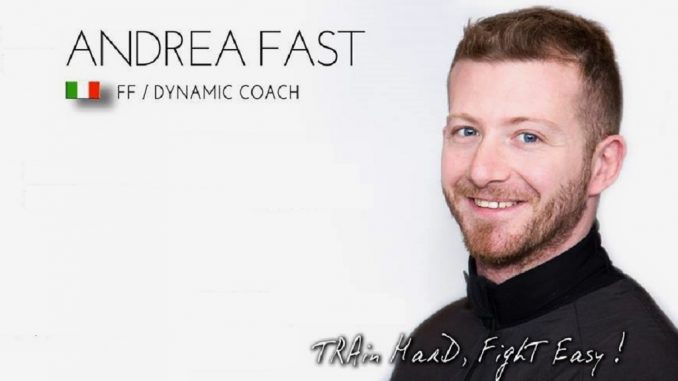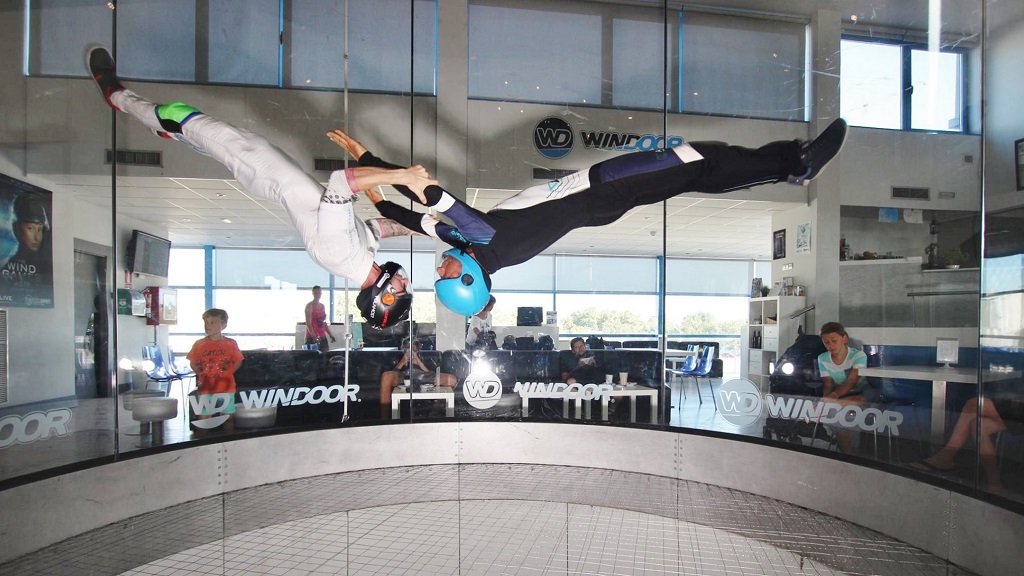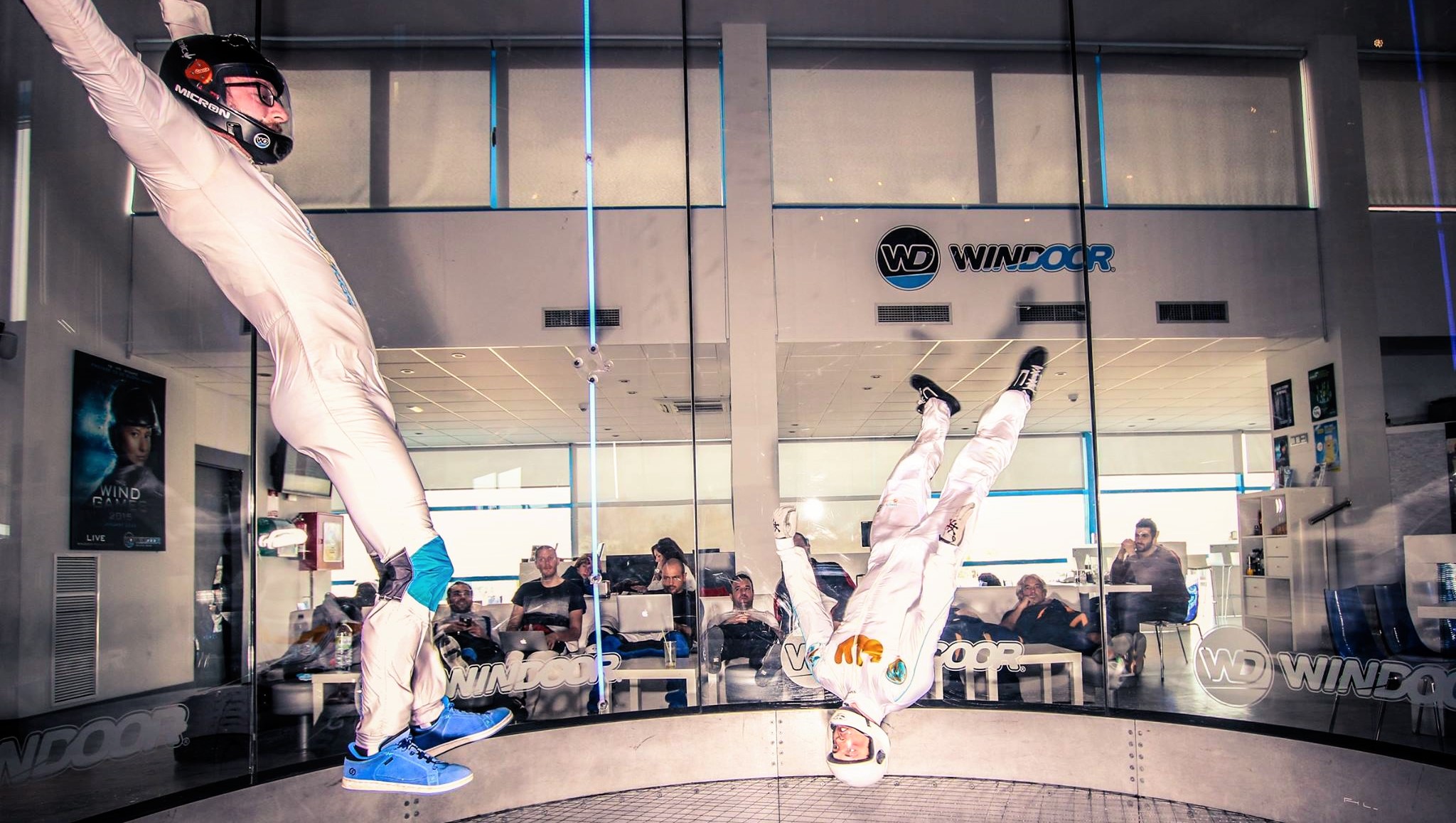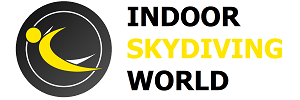

Andrea coaching at Windoor in Empuriabrava (Spain)
This Q&A article by Andrea Scaramuzza will give answers to some very common questions.
When can I become a Wind Tunnel Coach?
Nobody can stop you from proclaiming yourself as a Coach. Deciding when you start teaching people how to fly is – kind of – up to yourself. But it goes without saying that a healthy portion of self knowledge, evaluation of other coaches and respect for the sport should be your primary guidelines for making that decision. Expect and respect to be questioned before entering the tunnel with students if the staff on duty doesn’t know you or your skills and experience. Always accept that they might want to assist and / or shadow you in the beginning. Remember that it is the responsibility of the tunnel staff to ensure safety at all times. It is part of their job to interfere and ask you to adapt your coaching methods, possibly even to exit the tunnel, if you prove to be dangerous for your student, yourself or others.
Everybody started somewhere, and like all the rest you will have to gather experience from “learning by doing” and surely also “trial and error”. It’s advised to stay humble and always keep an open mind towards advice from other coaches and tunnel staff.
Are there courses or ratings to become a coach?
Most of the coaches around, even the very skilled ones, don’t have any specific coach rating. The IBA – International Bodyflight Association – appoints coach ratings, following a certain flying progression. At this point in time, the Tunnel Instructor Organization doesn’t believe such a rating is necessary.
Is it mandatory to become a Tunnel Instructor before I can become a coach?
No, but it is surely recommended.
So, how do I start coaching?
Before you do, fly a lot and take a lot of coaching yourself. Try to fly with different coaches, and observe as many coaches as you can, as much as you can. Be sure to have built up your skills and knowledge about the kind of flying you want to teach. Because others will be observing you too 🙂 It’s a good idea to spend some time getting comfortable walking on the net and moving around on your feet, acting fast and with confidence, even on higher wind speeds.
Inform yourself about the basic safety rules of the tunnel, the basic spotting techniques, as well as the way to communicate with the staff about desired wind speeds and other important topics. Always introduce yourself to the staff in case they don’t know you yet and don’t be shy to ask them for assistance if you need it. Consider to start by coaching your friends or people you feel comfortable with, to give yourself time to improve before charging money to strangers. Whether or how much you charge your friends during your initial learning period will of course be up to you.
Can I make a living from being a professional coach?
A lot of people do. It’s common practice and advisable to adjust your prices to the market, meaning that you shouldn’t over- or under-price your coaching out of respect for your “colleagues”, but people basically set their own salary. Whether you charge your friends or loved ones is obviously a personal choice. Inform yourself about what the average coaching fee is, and market yourself with common sense. In Europe most coaches charge between 170 – 200 euros per hour. Some might charge less, others more. If you think you should be charging top rates, make sure your skills make that acceptable.
With time, your students will find out they can buy a better product for the same price, or even less. On the other hand, if you set your prices very low, other coaches might feel you are offering unfair competition. As more and more people gain a high level of flying skills and are offering coaching, prices might develop over time and it will be your responsibility to keep an eye on the market and adjust wisely to the situation. But pricing your service correctly is only one aspect.

Andrea training with Alberto Fuertes at Windoor in Empuriabrava (Spain)
Make sure your “complete package” is attractive
Building up a base of regular customers and making a steady income will also depend on how you treat your students outside of the wind stream. If you want people to come back for more, make sure your “complete package” is attractive. If you consider coaching as your main source of income, organize yourself. Living close to a tunnel will make your work much easier in the beginning. Spending time at a tunnel on a regular or even daily basis makes you more “visible” to a wider range of possible customers. Also, you will be more flexible and able to offer coaching “on the spot” or in smaller time packages, and you can work on building up a good relationship with the tunnel staff and management.
Coaching Camps
For coaches with an established reputation, or leisure coaches with a regular job, it can be easier to organize coaching “camps”, condensing the working hours in a couple of (busy) days in a row, with a group of students coming during the same period. All in all, if you have a regular job we don’t want to recommend that you resign overnight. Start coaching slowly and stay realistic.
So, as a coach I can make good money without having to invest any more in personal progression since I will be flying with my students? In case you were thinking this, we are “slightly” disappointed. Yes, you will be learning a lot yourself by coaching other people. But apart from debatable ethics behind this question, we believe that continuously investing by taking coaching yourself or sharing time with other flyers, is priceless.
“Stay ahead of your game, or you’ll be done playing soon.” Andrea
Andrea “Fast” Scaramuzza is an appreciated Coach and Instructor based at Windoor (Spain).
So, do you want to be a Coach?
FIND OUT MORE ABOUT
Tunnel Instructor
